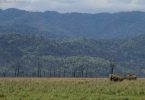Have you ever wondered about embarking on a journey to nature’s paradise and getting lost in the charm of the wildlife? Jim Corbett is no less than a heaven for wildlife lovers. Animals in Jim Corbett are abundant. It is famous for the Royal Bengal tigers. Tiger in Jim Corbett is one of the most sought-after species by visitors on safari. Jim Corbett has a rich diversity of flora and fauna. All the zones in Jim Corbett offers the sighting of wide variety of animals to the visitors. Jim Corbett is home to an abundance of species of stunning wildlife. Dhikala zone is the best zone for witnessing a rich variety of wildlife. Tigers, Asiatic elephants are the spirit of all zones in Jim Corbett. This zone has plethora of mammals, reptiles and birds.
Jim Corbett National Park animals include leopards, deer (Sambar deer, spotted deer, barking deer and Hog deer), Jackal, Crocodile, Sloth bear, Himalayan black bear, Crocodiles and Gharial could be found along the banks of Ramganga. The common reptiles found are python, king cobra, common cobra, porcupine and many others. The park offers best wildlife for photographers and they get to capture stunning canvas of raw nature. Majestic tigers, enigmatic elephants, playful langurs and monkeys, reptiles, vibrant birdlife , therefore the park has a lot to offer to visitors.
Fauna of Jim Corbett
Tiger
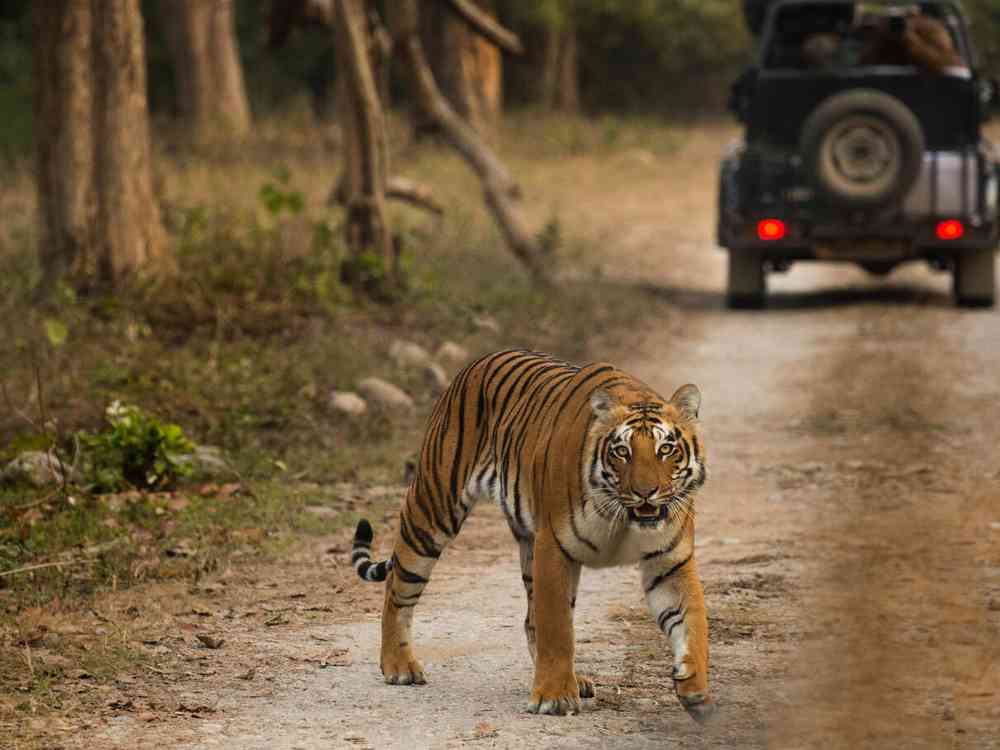
Corbett has rich biodiversity on which animals thrive upon. Tiger loves the terrain of riverine, grassland and deep forests. Tigers in the forest are found in significant numbers. The International Union for Conservation of Nature and Natural Resources (IUCN) considers the Bengal tiger to be an endangered subspecies.
Tigers choose larger prey such as Sambhar and eat for a week, the larger the prey the highest will be the energy gain. Females are found with babies while adult tigers are usually solitary. Jim Corbett has rich biodiversity on which animals thrive upon. Tiger loves the terrain of riverine, grassland and deep forests. Tigers in the forest are found in significant numbers. The International Union for Conservation of Nature and Natural Resources (IUCN) considers the Bengal tiger to be an endangered subspecies. Winters and summers are best season to visit Jim Corbett.
Read more about Best time to visit Jim Corbett.
Deer
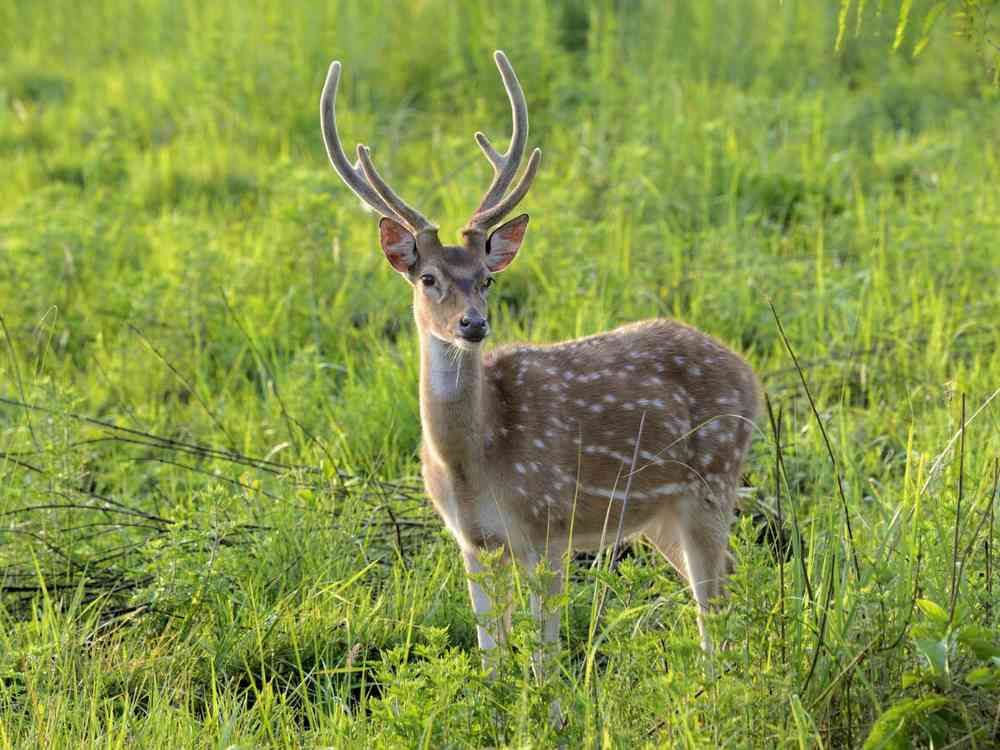
There are mainly four species of deer that are found in Jim Corbett: Chital(spotted deer), Sambar deer, Southern Red Muntjac(barking deer) and Indian hog deer.
Chital is the most cautious and beautiful animal species found in the jungle. The enchanting glimpse of spotted deer through the dense thickets provide the surreal experience to the visitors. They are called spotted deer because the white spots are found on the brown fur, they are moderately sized. They remain alert with the help of keen senses and protect themselves and other animals from predators such as tigers and leopards.
Sambar is a herbivore, it plays a crucial role in maintaining the park’s vegetation by feeding on plants, their body is greyish-brown in color and white on the backsides. Tiger usually prey on sambar deer due to its large size and they can be easily sighted even in the dense forests.
Barking deer is also known as Munjtac. It is known as barking deer because of their cry, they produce this sound when they feel danger around them. Barking deer is nocturnal, solitary and usually resides in thick forests.
Hog deer are smaller in size and makes whistling sound or warning bark when they feel danger around them. Due to its small size it escapes from the predator by crouching low.
Asian elephant
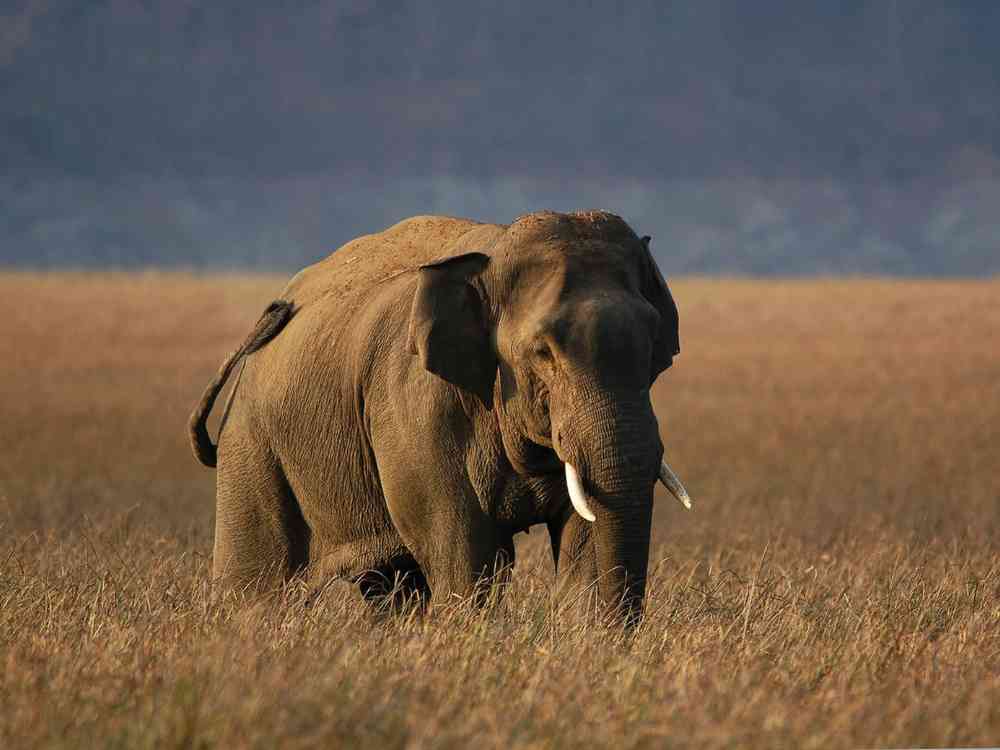
Asian elephants is the regal charm of Jim Corbett. They are the most charismatic in their demeanor. There are more than 1000 elephants in Corbett but some of them are migratory that traverse from the adjacently located Rajaji National Park. Asian elephants are found in Dhikala, Jhirna and Bijrani zones of Jim Corbett. Majestic elephants could be sighted along with their babies by the visitors, which enhance the overall experience of safari in the wildness.
Leopard
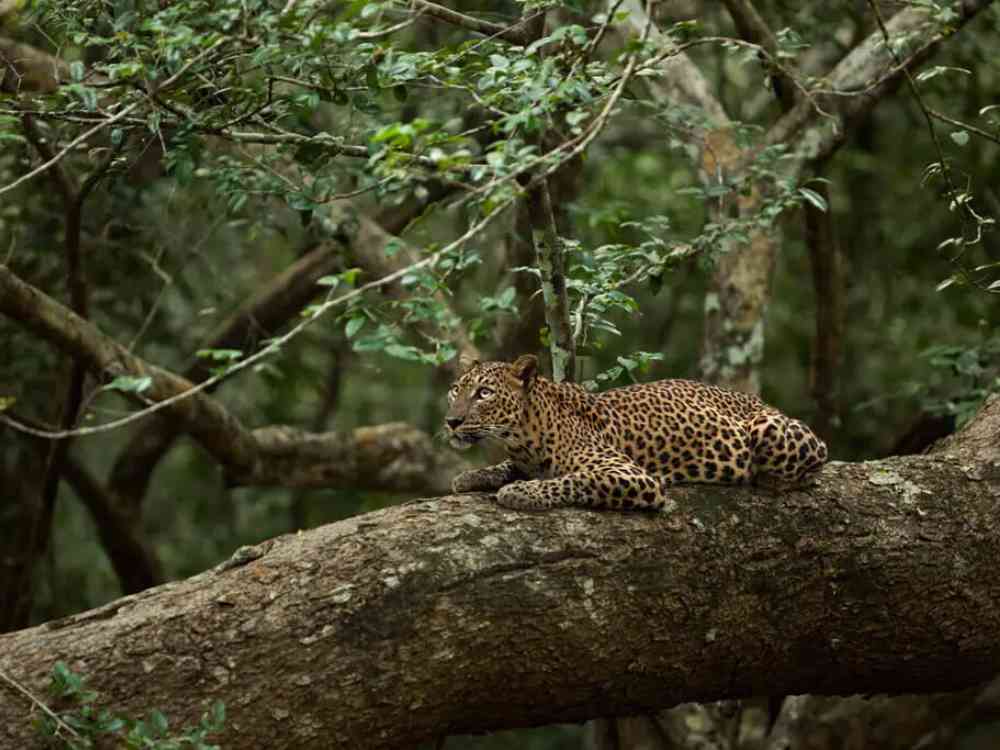
Leopard, also known as Guldar in local language are commonly found in Jim Corbett. It is also referred as Cheetah. Jim Corbett is a home to around 700 Leopards. Leopards usually reside in park’s hilly areas and low-land jungles. They are smaller in size when compared to tigers, they have yellow or golden spots and form rosettes which help them to camouflage in the jungle while attacking the prey. They have the ability to climb the trees and they catch their prey by jumping from the trees.
Rhesus monkey
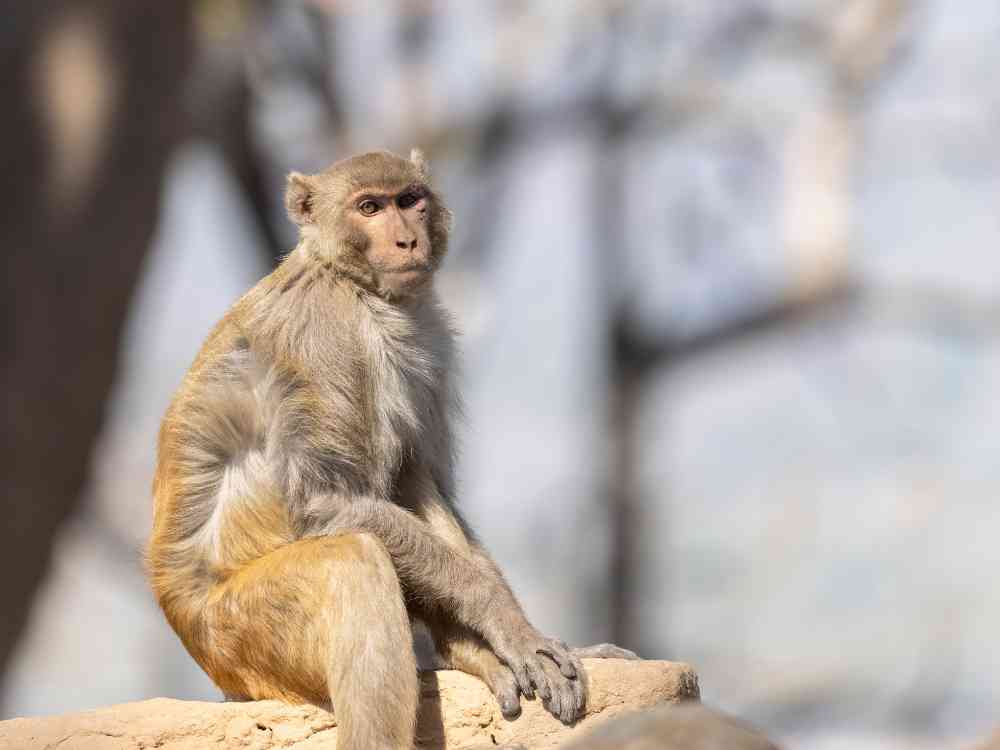
Rhesus monkey is the spirit of the jungles of Corbett. They are commonly seen in the forest. Monkeys are energetic, clever and mischievous creature present in the jungle. They are constant source of entertainment, often comes closer to the visitors and brings laughter through their activities. Monkeys and deer share symbiotic relationship. They are true friends as they help each other to save from the hunter and predator.
Bear
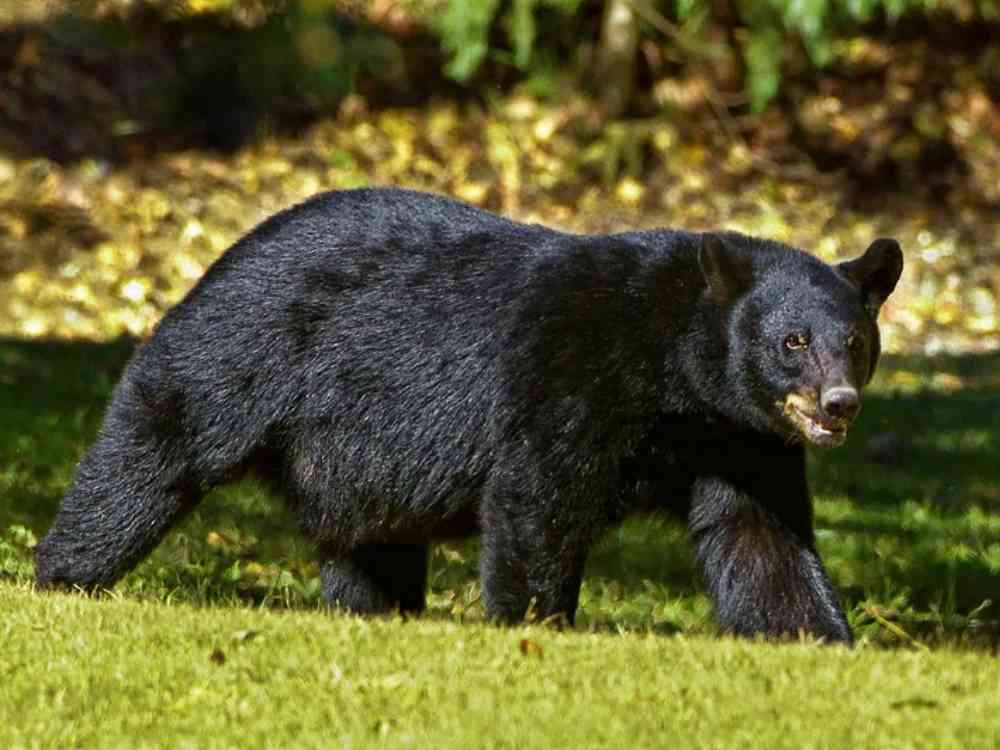
There are two species of bear which are found in Jim Corbett: Sloth bear and Asian black bear.
Sloth bear is unique species found in the magical forest of Jim Corbett. They have long snouts and shaggy fur. They are shy creatures and difficult to spot in the forest. Sloth bear have long muzzle and they dig termites mound through curved claws. They are insectivorous, they eat small mammals such as rodents and birds. They are light weighted so that they can climb to hilly regions.
Asiatic black bear, also known as Himalayan black bear or moon bear, they are usually found in Jhirna and Dhela zones of Jim Corbett. Black bear prefer cold weather. Sloth bear have crescent moon shaped patch on their chest which is the distinguishable feature. The species is considered an ecological indicator and a keystone species of the environment and plays a vital role in maintaining the stability of the ecosystem. they are extraordinary intelligent creature with excellent navigational skills thriving in the ecosystem of Jim Corbett.
Langur
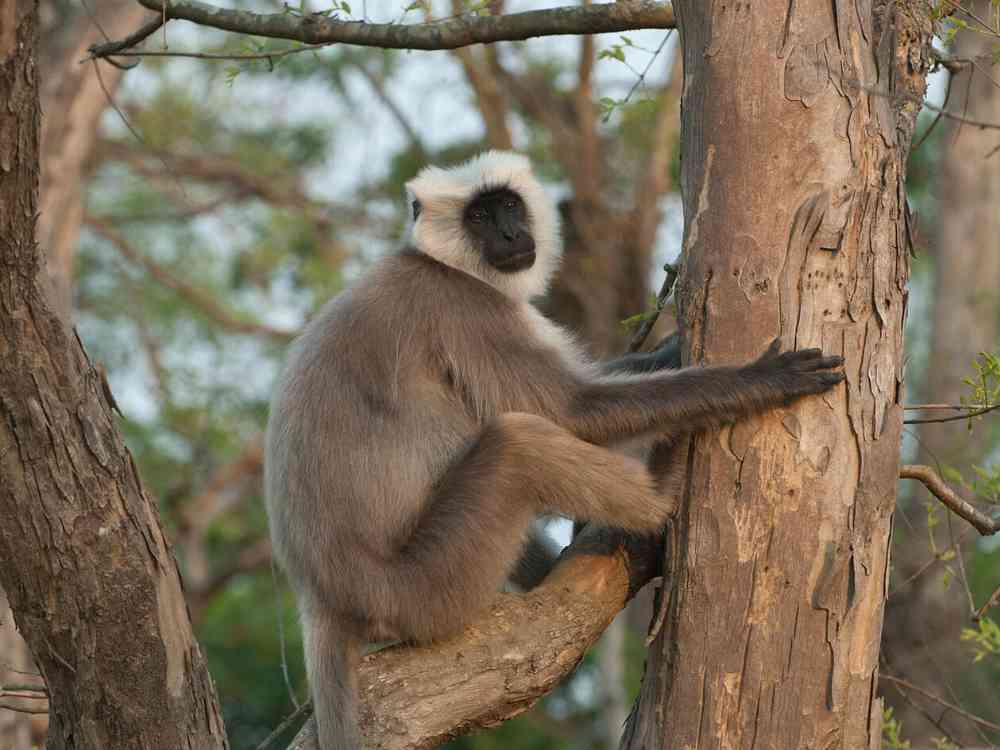
Langurs add playful charm to the forest of Jim Corbett Park. Their long tails sweep in the air while they sit on the branch of the tree. They jump from branch to branch and sit on treetops and observe the forest. They are commonly seen by the visitors, they always lookout for the predator like tiger in vicinity and warn the other animals.
Wild Boar
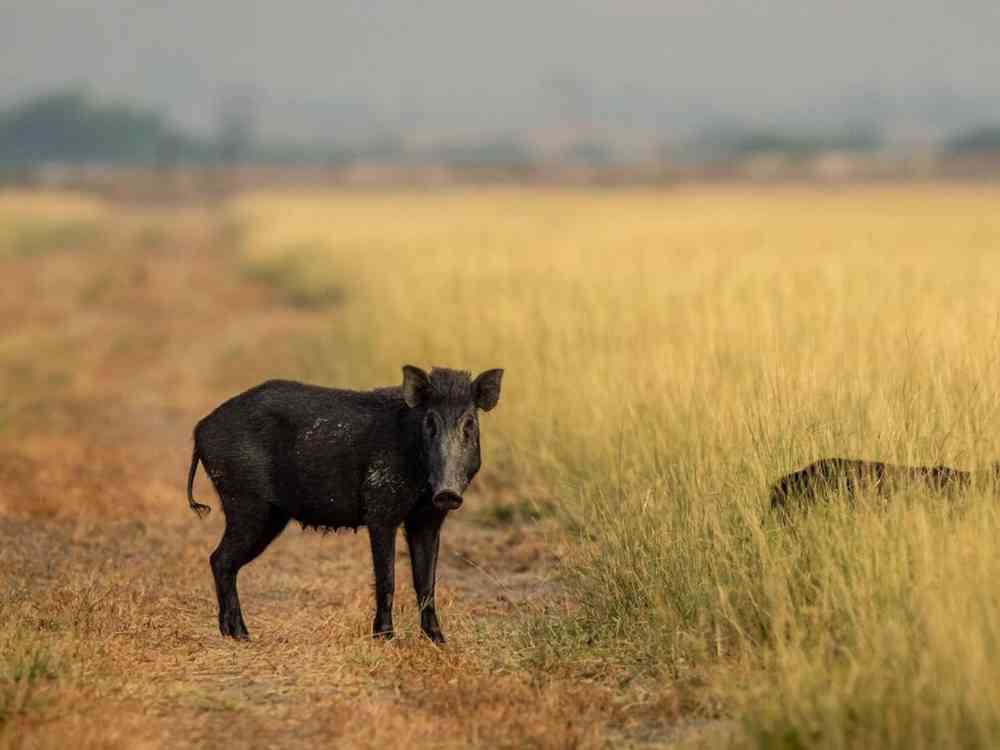
Wild boars are the most rugged in appearance and highly adaptable to any environment. They are primary prey species for Tiger and Leopards, they help to maintain the food chain. Boars are commonly found in the jungle of Jim Corbett.
Reptiles
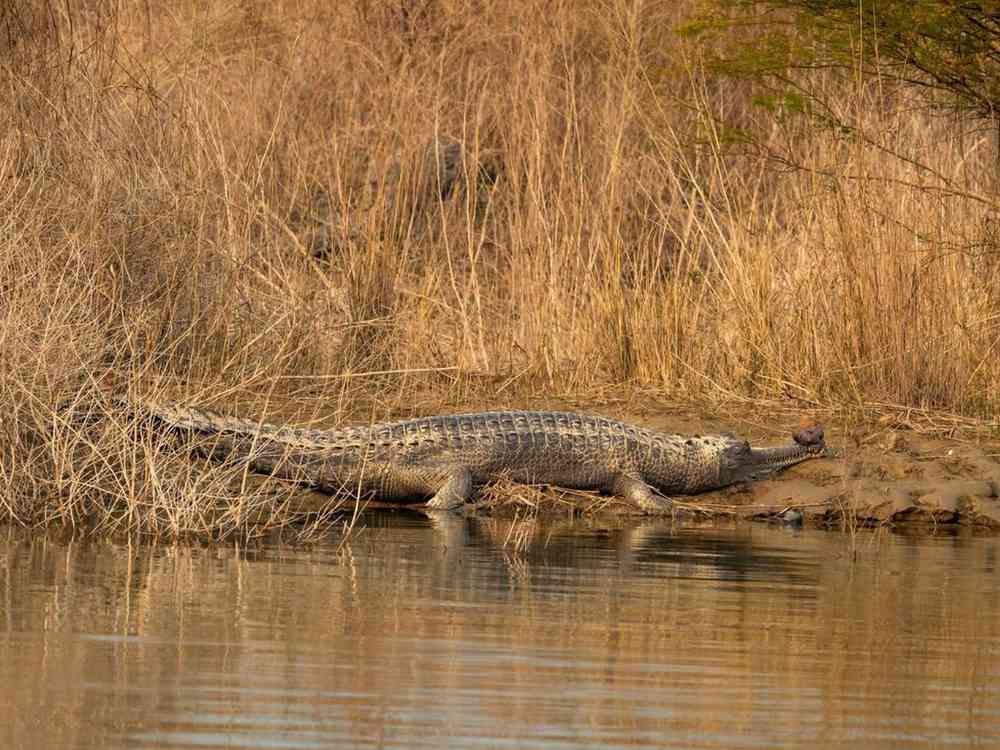
Jim Corbett park is a home for a wide variety of reptiles. From Indian pythons slithering through the underbrush to the crocodiles basking in the sun near riverbanks, the park has it all. The reptiles found in Jim Corbett are Gharials, Monitor lizard, King Cobra and Rusell’s viper. Gharial is one of largest and most endangered crocodiles in the world. There are more than 400 Gharials residing in Jim Corbett. They usually prey on fish and rarely eat large mammals. Apart from this, turtles also inhabit the forest and commonly found in lakes, ponds and rivers.
Birdwatching in Jim Corbett
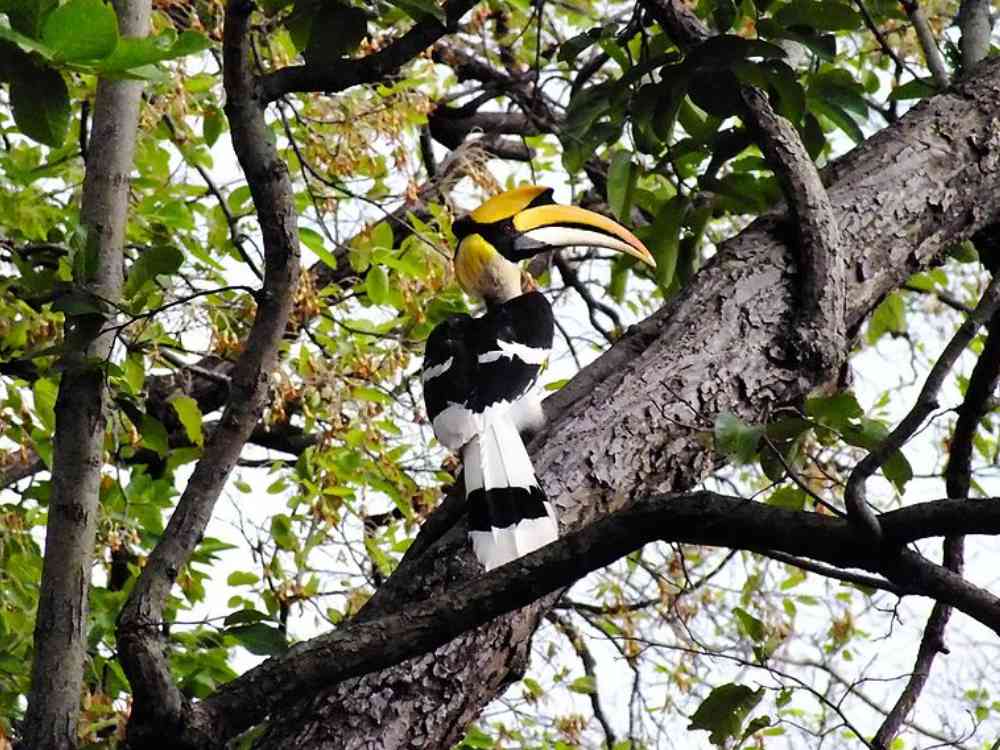
Over 600 species inhabit the Jim Corbett which include residents and migratory birds. The park offers an unforgettable bird watching experience. Corbett is known as the “land of song, trumpet and roar”. It is not only famous for tigers but also known for a myriad species of birds. It is a paradise for bird lovers. Popular birds found in Jim Corbett are Great Hornbill, Indian Grey Hornbill, Common Kingfisher, Himalayan woodpecker, Oriental Magpie Robin, crested serpent eagles, jungle fowl, parakeets, kingfishers and migratory birds that arrive in the winter months.
Other birds such as shikras (Levant sparrowhawks), Indian white-backed vultures, black partridges, golden orioles, red jungle fowl, black-crowned night herons, Indian roller, Black Drongo, Asian Paradise, Tawny fish owl, blue-throated barbet, Himalayan Bulbul, Lesser fish eagle, Pallas’s fish eagle, owl, nightjars and peafowl are also found in the mystical forests of Jim Corbett.
FAQs
Jim Corbett National Park is famous for which animal?
Jim Corbett Park is famous for Royal Bengal Tigers, besides this there are plethora of animals found in the dense forest of Jim Forest. Animals such as leopards, deer (Sambar deer, spotted deer, barking deer and Hog deer), Jackal, Sloth bear, Himalayan black bear, Crocodiles and Gharial could be found in tranquil rivers of Jim Corbett. Moreover, it is a heaven for bird lovers because lot of bird species are found here.
Are there tigers in Jim Corbett?
Jim Corbett is an ideal place for spotting tigers. there are approximately 225 tigers residing in the jungle. Continuous conservation initiatives are taken to protect this majestic species since 1976, Jim Corbett Park is the first park to come under Project Tiger.
What animals are in the Dhikala zone?
Dhikala zone of Jim Corbett is pretty rich in wildlife with spectacular landscapes. Animals such as tiger, gharial, Sambar deer, Asiatic elephants and different variety of birds are commonly found in this zone. This zone is the most sought-after zone for Jim Corbett Safari. Read more about zones of Jim Corbett.
Which is the best tiger zone in Corbett?
Dhikala zone is the best zone in terms of tiger sighting. But other zones also offer rich wildlife witnessing experience to the visitors. Recently, Phato zone is also the hot talk of the town, because a lot of tiger sighting is happening there.
What are the chances of seeing a tiger in Jim Corbett?
Since, nobody can assure you that you will get to see the tiger one hundred percent, it totally depends on luck. The animals reside in the natural habitat moving from one area to another timely. But there is high possibility of spotting tigers in summer and winters because they dwell near water bodies in summer season and bask in the sun during winter season. Therefore, you should do a well research about seasons in order to increase the chances of tiger sighting if planning your trip to Jim Corbett.
How safe is Jungle safari in Jim Corbett?
Jungle safari is extremely safe Jim Corbett, but you have to follow the protocol in order to be safe during the safari. Ensure that you do not wander or go down of gypsy while you are on safari because it is natural habitat and it is a home for wild animals.
Whether you are wildlife photographer or adventure enthusiast, Jim Corbett Park promises the thrilling and unforgettable experience like no other.
Book your trip to nature’s paradise with Justwravel’s Jim Corbett Safari Packages.







